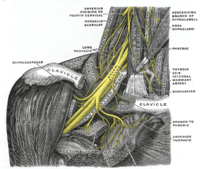
Photo from wikipedia
Motorcycles are widely used in various workplaces. Motorcycle use for occupational purposes continues to increase owing to growing e-commerce. Here, we aimed to highlight the importance of occupational motorcycle injuries… Click to show full abstract
Motorcycles are widely used in various workplaces. Motorcycle use for occupational purposes continues to increase owing to growing e-commerce. Here, we aimed to highlight the importance of occupational motorcycle injuries by analyzing their epidemiologic characteristics and outcomes. We analyzed retrospective data from the Emergency Department-based Injury In-depth Surveillance program from 2012 to 2018. Motor vehicle injuries involving riders aged ≥16 years were included. Patients were divided into occupational motorcycle and non-occupational motorcycle injury groups based on whether or not the injury occurred during work time. General characteristics, injury details, and clinical outcomes such as injury severity and in-hospital mortality were analyzed. Of the 37,194 study patients, 24.2% (8,991) experienced occupational motorcycle injuries. The number of injuries in both groups increased yearly, as did the proportion of occupational injuries among total injuries. In both the groups, patients aged 20–29 years had the highest proportion of injuries. Regarding collision pattern and injury counterpart, side-to-side collisions and injuries involving small four-wheel vehicles were the most frequent. Alcohol intake was significantly lower, while helmet usage was higher in the occupational motorcycle injury group. Moreover, patients with occupational motorcycle injuries had lower injury severity, admission rate, and in-hospital mortality. On multivariable logistic regression analysis, increasing age, time of the injury, alcohol intake, not using a helmet, and collision with a human or animal were associated with higher odds of severe injury. Patients with occupational injuries had higher helmet usage, lower injury severity, lower mortality, and lower admission rate than did patients with non-occupational injuries. Injury severity was associated with the time of injury, collision with other living objects, alcohol consumption, and helmet usage.
Journal Title: PLOS ONE
Year Published: 2023
Link to full text (if available)
Share on Social Media: Sign Up to like & get
recommendations!